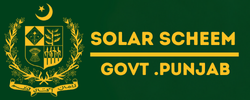The Government of Pakistan has taken big steps to reduce poverty. It supports needy families through its Ehsaas Kafalat program. Recently, over Rs. 37 billion has been successfully distributed to eligible families under this initiative. This distribution shows the government is committed to the welfare and stability of its citizens.
What is the Ehsaas Kafalat Program?
The Ehsaas Kafalat program is a part of the broader Ehsaas initiative launched by the Government of Pakistan. The program aims to provide financial assistance to the poorest and most vulnerable segments of society. It focuses on empowering women. Financial aid goes directly to them. This enhances their role in household money management and their overall status.

Key Objectives of the Ehsaas Kafalat Program
- The main goal is to cut poverty. This is done by giving money to low-income families.
- Economic Stability: The program gives cash to eligible families. It aims to steady household incomes, so families can meet their basic needs.
- The program focuses on women. It does this to promote gender equality and empower them financially.
- Social Protection provides a safety net for the most vulnerable. It ensures they have access to basic resources and services.
Distribution of Rs 37 billion: a milestone achievement.
Overview of Distribution
The successful distribution of Rs. The program has given 37 billion under the Ehsaas Kafalat program. This marks a big milestone in Pakistan’s social welfare efforts. This distribution has reached millions of families. It was across various regions and provided them with much-needed money.
Table: Distribution Breakdown by Province
Province Amount Distributed (Rs.)Number of BeneficiariesPunjab got 15 billion. It is for 1.5 million people. Sindh got 10 billion for 1 million people. Khyber Pakhtunkhwa got 6 billion for 600,000 people. Balochistan got 3 billion for 300,000 people. Other places got 3 billion for 300,000 people. In all, 37 billion went to 3.7 million people.

The table above illustrates the distribution of funds among provinces. It highlights the government’s efforts. They aim to ensure fair distribution and help the most people.
Impact on Beneficiaries
The distribution of Rs. 37 billion has had a profound impact on the lives of the beneficiaries. Here are some key areas where this financial help has made a difference:
Improved Livelihoods
The cash aid has let families buy essential goods, like food, clothing, and medicine. This has improved their living standards. For many, this aid has been a lifeline, providing them with the means to survive during difficult times.
Enhanced Financial Inclusion
By disbursing funds through digital payment systems, the program has promoted financial inclusion. Many beneficiaries, especially women, have opened bank accounts. It is the first time they had them. This has given them access to formal financial services and improved their financial literacy.
Educational Support
A significant portion of the beneficiaries has used the funds to support their children’s education. This aid has helped cover school fees and buy books and other materials. It ensures that children can keep going to school without pause.
Health and Well-being
Access to healthcare has also improved, as many families have used the funds to pay for medical treatments and medicines. This financial support has been crucial in improving the overall health and well-being of the beneficiaries.
Challenges and Future Prospects
Challenges Faced
Despite the program’s success, there have been challenges in the distribution process. These include:
- We must identify the beneficiaries. This task has been complex. It requires strict verification to ensure only eligible families get the aid.
- Reaching remote and underserved areas has posed logistical challenges. It requires innovative distribution methods.
- Digital Literacy: A lack of digital literacy among some beneficiaries has made it difficult for them to access and manage the funds.
Future Prospects
Pakistan’s Government is committed to facing these challenges. They will also improve the Ehsaas Kafalat program. Future prospects include:
- We use Enhanced Verification Systems. They use advanced tech to speed up identifying and verifying beneficiaries.
- Expanded reach is about increasing the program’s reach. The goal is to ensure that more families in remote and underserved areas get help.
- Capacity Building means providing training and support to beneficiaries. It helps them improve their digital literacy and financial management skills.
Conclusion
The distribution of Rs. 37 billion went to the Ehsaas Kafalat program. The program is a big step in reducing poverty and protecting people in Pakistan. This initiative has given money to millions of families. It has also empowered women, and supported education and health. It has promoted financial inclusion.
Challenges remain. But, the government keeps working to improve and grow the program. It promises a brighter future for the most vulnerable in society. The Ehsaas Kafalat program will keep playing a key role. It will help to make Pakistan fairer and more prosperous. This will happen through ongoing commitment and innovation.

